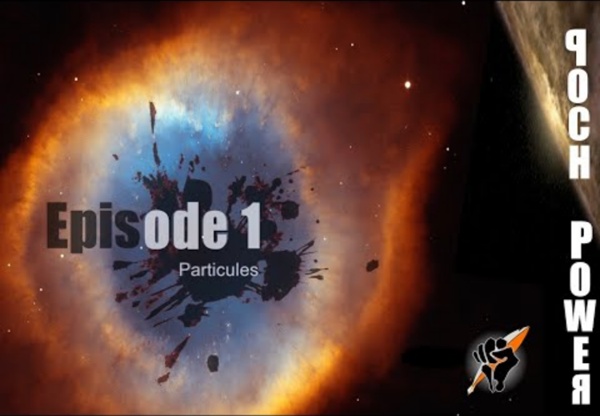



A quasi-political Explanation of the Higgs Boson This explanation of the Higgs mechanism and boson theories was written by David J Miller (then of UCL) to enlighten the UK science minister Mr Waldegrave in 1993. This has been something that's bugged me I've not got around to finding out about, and I find the analogy very elegant... 1. The Higgs Mechanism Imagine a cocktail party of political party workers who are uniformly distributed across the floor, all talking to their nearest neighbours. In three dimensions, and with the complications of relativity, this is the Higgs mechanism. 2. Now consider a rumour passing through our room full of uniformly spread political workers. Since the information is carried by clusters of people, and since it was clustering which gave extra mass to the ex-Prime Minister, then the rumour-carrying clusters also have mass. from David J.
Quantum Diaries This is an age old question, always asked (and always fervently!) of the person with the better vantage point: the older sibling peering into the next room through the keyhole; the watchman scanning the horizon from the ship’s crows nest; and now us, AMS, taking our first glance out over the universe from the space station. What do you see, what do you see?!?! The answer, as we squint through our sights, trying to make out shapes of unknown and unexpected things, is also age-old: “I’m not sure yet, gimme more time!” The first AMS-02 results– the positron fraction–were announced this week. So I thought I’d come here and give a few answers to some obvious (or not-so-obvious) questions. If we can’t tell what we see, why are we publishing? Well I guess I shouldn’t be so glib: we can tell you exactly what we see and how precisely we see it. With AMS-02 we are at the first moment where we are ready to report what we see, and it may or may not point to new physics. Yes, in fact.
Quantum Diaries Même avant mon départ pour La Thuile (Italie), les résultats des Rencontres de Moriond remplissaient déjà les fils d’actualités. La session de cette année sur l’interaction électrofaible, du 15 au 22 mars, a débuté avec la première « mesure mondiale » de la masse du quark top, basée sur la combinaison des mesures publiées jusqu’à présent par les expériences Tevatron et LHC. La semaine s’est poursuivie avec un résultat spectaculaire de CMS sur la largeur du Higgs. Même si elle approche de son 50e anniversaire, la conférence de Moriond est restée à l’avant-garde. Nouveaux résultats Cette année, le clou du spectacle à Moriond a bien entendu été l’annonce de la meilleure limite à ce jour pour la largeur du Higgs, à < 17 MeV avec 95 % de confiance, présentée aux deux sessions de Moriond par l’expérience CMS. L’annonce du premier résultat mondial conjoint pour la masse du quark top a aussi suscité un grand enthousiasme. Nouvelles explorations … mais pas de nouvelle physique